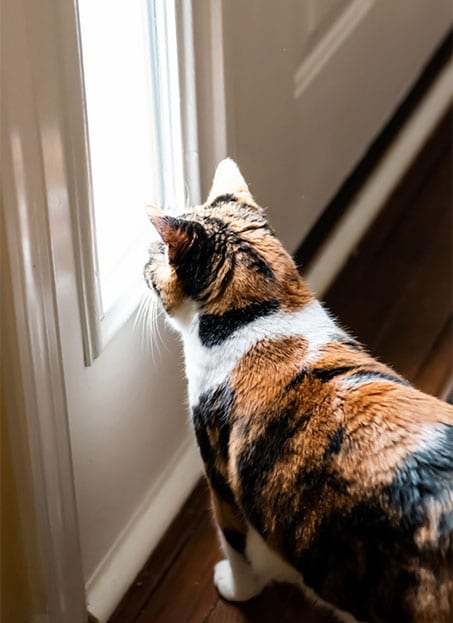Cat and Dog Separation Anxiety in Limerick
Cat and dog separation anxiety is a condition that can develop primarily in young dogs, although older dogs and even cats can also be affected. The exact reasons this anxiety develops isn’t clear, but it can be triggered when a dog suffers a traumatic loss of its family (or “pack”), such as being surrendered to a shelter. Yet, since dogs are such social animals, it’s possible for them to begin developing this condition in response to much less traumatic (in our eyes) circumstances, such as the kids going back to school after a long summer of being home all day. If you start noticing a change in your pet’s behavior while you’re away, it could be separation anxiety. Fortunately, your pet’s anxiety can be mitigated with the right training techniques.
How to Know if Your Cat or Dog has Separation Anxiety
The signs of cat and dog separation anxiety are tricky to pinpoint, not least of all because they occur only when you’re not around. Additionally, some of the signs could also be symptoms of underlying medical conditions and are not a result of separation anxiety at all. The first thing to do if you notice any of the signs below is to consult your veterinarian. We’ll be able to perform exams and tests to rule out any medical condition so you can be sure your pet is affected by separation anxiety and treat it accordingly.

Signs of cat and dog separation anxiety may include:
- Destructive behavior (tearing up furniture, clothing, and pillows)
- Escape attempts (look for claw marks or digging signs near doors and windows)
- House soiling (that only occurs when you’re away; this could also be a sign of unfinished potty training or the result of you being gone too long)
- Pacing in circles or a straight line (a camera set up in your home is the only sure way to be aware of this sign)
- Howling or barking excessively (your neighbors will likely let you know about this one!)
Ways to Help Your Pet Enjoy (or At Least Tolerate) Being Alone
The best way to counter-condition your pet’s anxious behavior is to help them associate good things with being alone. Ways you can do this include:
- Leaving and coming home as nonchalantly as possible. Making a fuss over your pet each time you leave and return only reinforces their anxiety. Give them little to no farewell and ignore for a time when you get home until they’ve settled down.
- Give your pet a special treat that they can only enjoy when they’re alone. A Kong toy filled with peanut butter or another favorite treat is a great distraction for them as you slip quietly out the door.
- Let them play with a favorite toy only when you leave. This helps them further associate you leaving with good things. Be sure to take this toy (and the special treat mentioned earlier) away as soon as you return home.
- If your pet becomes anxious before you leave, try to desensitize them to your departure cues. Pick up your keys, and go sit on the couch; leave your kids’ backpacks by the door on a Saturday; grab your purse and carry it with you one morning; you get the idea.
- Leave the TV turned on to a nature channel or kids’ show or put the radio on a classical music channel so your pet has something calming to listen to while you’re away.
- Consider bringing your dog to Happy Tails! At our dog daycare facility, they’ll enjoy plenty of exercise and socialization to make them forget their loneliness. It’s good for their mental and physical well-being, and it’s convenient for you, too!
- If your pet has more severe anxiety problems than these tips can fix, talk to your veterinarian by calling (610) 489-2848. We may recommend anti-anxiety medication for your pet to take while you continue to work on further reducing their anxiety with training.
Have questions about cat and dog separation anxiety or want to enroll your pet in our daycare? Contact us at (610) 489-2848 today!
